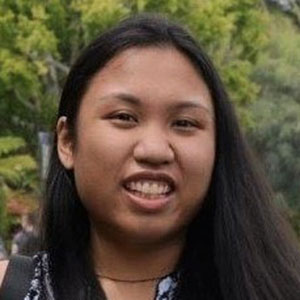An unexpected component in retinal survival
At the back of the eyeball, in the retina, photoreceptor cells convert light into electrical signals that are sent to the brain for processing. When these photoreceptors degenerate, vision can become impaired, and conditions such as macular degeneration and retinitis pigmentosa sometimes develop. Blindness may result.
In a recent study published in the Journal of Lipid Research, researchers at the National Eye Institute describe how they discovered the importance of a membrane-linked receptor protein called pigment epithelium-derived factor receptor, or PEDF-R, in photoreceptor structure and function and, ultimately, in retinal survival.

Alexandra Bernardo Colón, a biologist at the National Eye Institute, works in Patricia Becerra’s lab, where they focus on retinal degeneration. They aim to understand factors that can play a role in preventing photoreceptor cell death, including PEDF, a protein that helps protect the retina by interacting with PEDF-R to spur its phospholipase activity.
Bernardo Colón became interested in PEDF-R due to this phospholipase activity. Photoreceptors, which are rich in phospholipids, produce PEDF-R, and, upon binding of PEDF, PEDF-R catalyzes the hydrolysis of phospholipids and triglycerides.
“Phospholipid metabolism is really critical for the homeostasis of photoreceptors and health of the retina,” Bernardo Colón said. “What is unclear is whether PEDF-R, as a phospholipase, is a molecular link between phospholipids and the photoreceptor survival, so that’s why this is intriguing.”
This receptor is usually called adipose triglyceride lipase, or ATGL, but Bernardo Colón believes her term is more accurate in the field of eye health. “We are calling it PEDF-R because it’s not just found in the adipose tissue,” she said. “We found that we can see it in the entire retina.”
To investigate the role of PEDF-R in photoreceptor structure, the team used CRISPR technology to knock out Pnpla2, the gene encoding for PEDF-R, in mice. They also ensured that known mutations causing retinal degeneration were not present. They found that mice deficient in PEDF-R had photoreceptor deformities, such as smaller thickness of multiple retinal layers and unevenly arranged outer segments, and accumulation of two main retinal phospholipids.
“We’re suggesting a causal link to photoreceptor dysfunction,” Bernardo Colón said.
PEDF-R deficiency caused decreases in both mRNA and immunofluorescence levels of rhodopsin and opsin, which are the photoreceptor cells that help detect light.
The team then performed an electroretinogram to measure how different cells in the retina, including photoreceptors, responded to light. They found that missing just one copy of the Pnpla2 gene compromised photoreceptor function and missing both was even more detrimental.
Overall, the researchers noted that PEDF-R plays a crucial role in photoreceptor structure and function as well as phospholipid metabolism. They also underlined the fact that all layers of the retina are interconnected.
“When one layer malfunctions, all of the other layers will follow,” Bernardo Colón said, “so if PEDF-R is not functioning, eventually all of the other layers of the retina will not function as well.”
Ultimately, this research team hopes to develop drugs to ensure retinal survival and combat blindness, with phospholipid metabolism as a potential therapeutic target.
Enjoy reading ASBMB Today?
Become a member to receive the print edition four times a year and the digital edition monthly.
Learn moreGet the latest from ASBMB Today
Enter your email address, and we’ll send you a weekly email with recent articles, interviews and more.
Latest in Science
Science highlights or most popular articles

Exploring the link between lipids and longevity
Meng Wang will present her work on metabolism and aging at the ASBMB Annual Meeting, March 7-10, just outside of Washington, D.C.

Defining a ‘crucial gatekeeper’ of lipid metabolism
George Carman receives the Herbert Tabor Research Award at the ASBMB Annual Meeting, March 7–10, just outside of Washington, D.C.

The science of staying strong
Muscles power every movement, but they also tell the story of aging itself. Scientists are uncovering how strength fades, why some species resist it and what lifestyle and molecular clues could help preserve muscle health for life.

Bacteriophage protein could make queso fresco safer
Researchers characterized the structure and function of PlyP100, a bacteriophage protein that shows promise as a food-safe antimicrobial for preventing Listeria monocytogenes growth in fresh cheeses.

Building the blueprint to block HIV
Wesley Sundquist will present his work on the HIV capsid and revolutionary drug, Lenacapavir, at the ASBMB Annual Meeting, March 7–10, in Maryland.

Gut microbes hijack cancer pathway in high-fat diets
Researchers at the Feinstein Institutes for Medical Research found that a high-fat diet increases ammonia-producing bacteria in the gut microbiome of mice, which in turn disrupts TGF-β signaling and promotes colorectal cancer.

